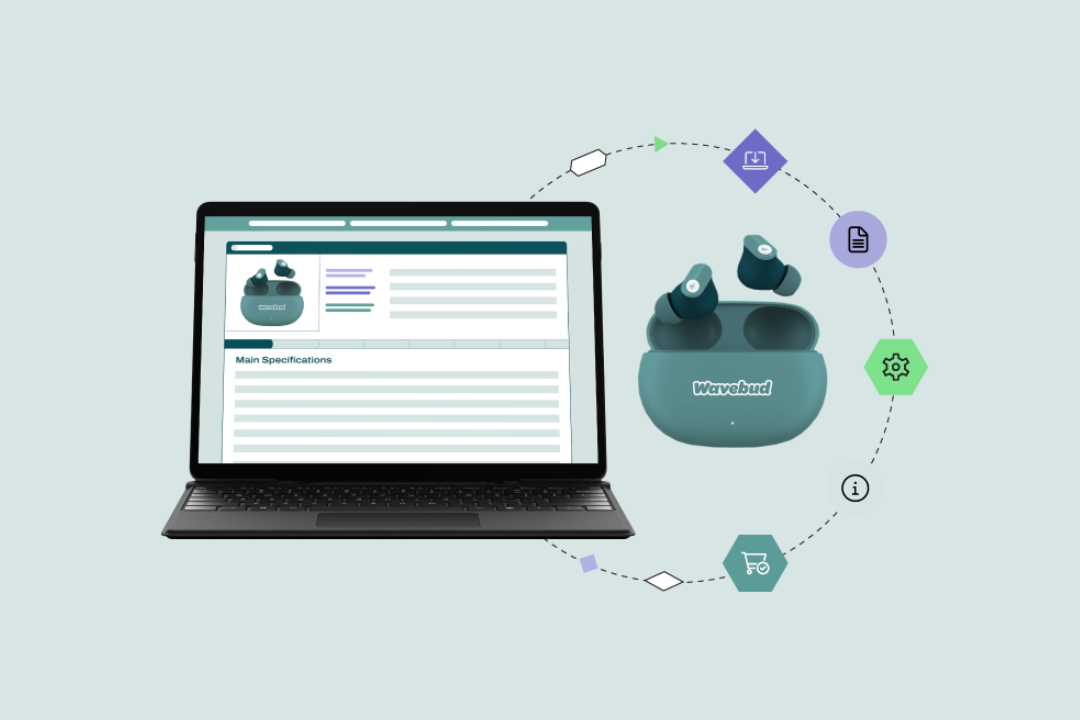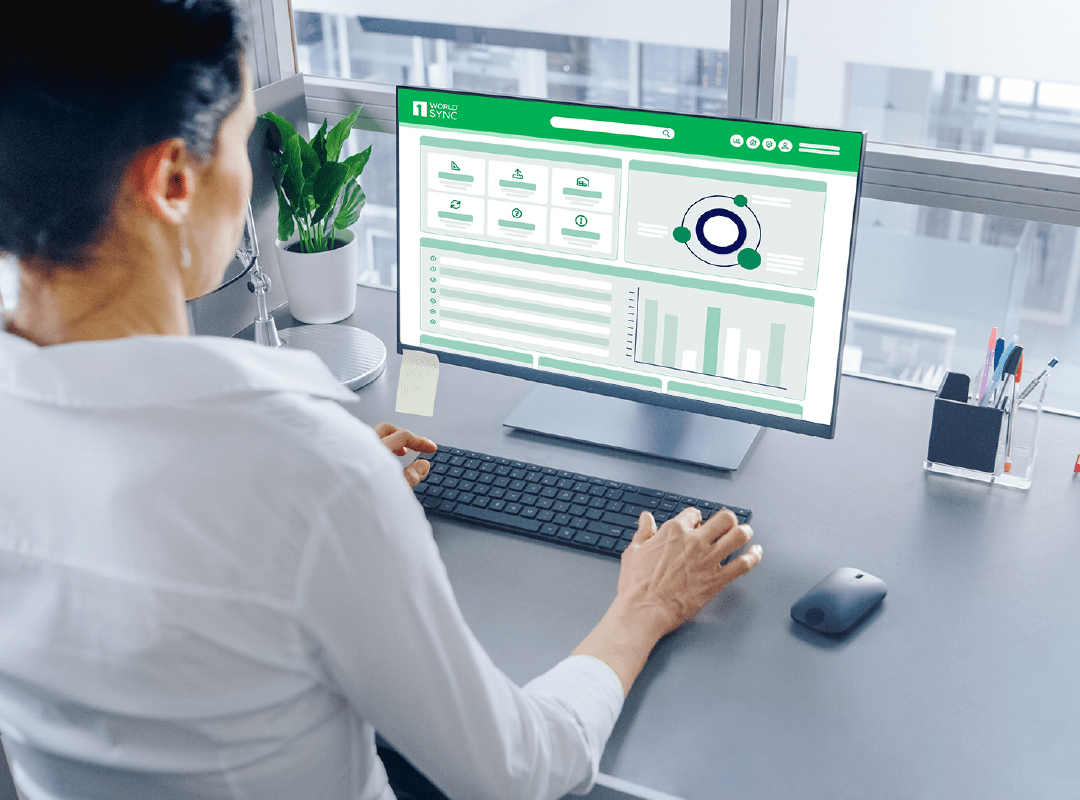Greater data governance in healthcare can enable an improved patient continuum of care, more supply chain simplicity & visibility, and information and accuracy across the industry. The demand for such improvements in global healthcare could not be greater—driven by advancements in digitalization and technology, and contributing factors including increased consumer access to healthcare and a rapidly aging population that will call for greater elderly and long-term care, to name a few.
While global standards and data processes in healthcare improved over the past decade, poor data governance and lack of proper healthcare data exchange still exist today. These shortcomings can negatively impact the patient continuum of care. When product or medical device data is not standardized across all care settings it can cause inefficient workflow or data management processes that detract from patient care, and lead to higher costs and poor health outcomes.
In the case of long-term care, 80% of nursing facilities surveyed1 in a published study of Journal of the American Medical Association Open Network2 “cited one or more shortcomings across the domains of timeliness, completeness and usability of shared data associated with acute care transitions.”
For home- and community-service long-term care healthcare provider Ohio Living, finding better ways to share data across their healthcare exchange to reduce rehospitalizations and provide better transitions of care proved challenging due to fragmented or missing data, or siloed and manual electronic health record (EHR) system use3. More specifically, data access was more manual and time consuming due to each hospital system having individual account profiles with their databases and EHRs set up differently from other hospitals that Ohio Living received patient referrals from. Also, data was not always fully integrated into an EHR system and instead, stored in PDF format inside a documentation folder in the resident/patient’s chart, according to the case study findings.
For Geisinger, as discussed in our recently published case study, the data mapping process to their own internal database was very time-consuming, taking “52 hours to map and load just 36 items,” highlighting the need for standardization4.
Luckily, improvements in healthcare data standardization continue to make gains in the industry.
EHR and EMR improvements
The use of EHRs and EMRs have come a long way since their inception in 2008 and required usage since 2015 under the American Recovery and Reinvestment Act (ARRA). The use of RFID healthcare inventory management solutions can help optimize inventory levels and peak usage needs and track product expirations and recalls. Recent data from the National Center for Biotechnology Information (NCBI) confirms that there are approximately 5,000 types of medical devices used by millions of healthcare providers worldwide5. Barcoding systems that standardize units of measure and dosage amounts can also decrease “preventable” medication errors. NCBI data confirmed6 the use of barcode medication administration (BCMA) and electronic medication administration record (eMAR) technology improved patient safety by decreasing the overall rate of adverse drug events (ADEs) and the rate of transcription errors.
GS1 Standards
For GS1, providing a Healthcare Interoperability Model and set of global implementation guidelines allows for more rapid, efficient and accurate automatic electronic transmission of agreed business data between trading partners. GS1 provides standardized units or “attributes” of measure7 that can impact patient care as part of its GS1 healthcare pharmaceutical attributes, including (but not limited to):
- Manufacturer Global Location Number (GLN)
- Global Trade Item Number (GTIN)
- Route of administration
- Volume/weight unit
- Classification (to depict if item is regulated or not)
- Web Assisted Notification of Devices (WAND) number for medical devices
- Reusability information
- Regulation/certification (e.g., TGA risk classification can be used to gauge the level of potential harm that a patient could experience by using a medical device)
- Expiration date on packaging
- Pricing (suggested retail to consumer price and UOM)
1WorldSync Playlists
To further simplify data exchange processes between healthcare product manufacturers and providers— including hospitals, long-term and short-term care facilities, pharmacies, Group Purchasing Organizations (GPO), and logistics providers—the 1WorldSync Playlist establishes a set of data validations to ensure that recipients get the exact product attribution needed. In addition, the Playlist simplifies the process for suppliers by narrowing down the attribute set to that requested by the specific recipient.
Prerequisites for proper healthcare data exchange
– Technology readiness of healthcare providers to facilitate information sharing
– Use of product data exchanges that are fully integrated across care settings
With such healthcare data standardization and master product data management best practices, providers can benefit from the following:
- Trusted, validated product info directly from the product manufacturer
- Improved product data quality
- Enhanced data sharing efficiency in the healthcare supply chain
- Less margin for error that could negatively impact patient care
- More time devoted by frontline healthcare professionals to focus on providing a patient continuum of care
Find out how 1WorldSync provides trusted, accurate healthcare data for IDNs, hospitals and healthcare organizations.
Attended healthcare track 508 at the GS1 Connect 2021 Digital Edition conference, and part of the 1WorldSync Community? Navigate to the “GS1 Connect June 2021 Knowledge Base” page in Community and download the presentation.
References
1. Healthcare Information and Management Systems Society, Inc. (HIMSS), “Sharing Data Across the Care Continuum: Perspectives from Long-Term and Post-Acute Care Case Studies,” Feb. 25, 2021: https://www.himss.org/resources/sharing-data-across-care-continuum-perspectives-long-term-and-post-acute-care
2. JAMA Network Open, “Information Sharing Practices Between US Hospitals and Skilled Nursing Facilities to Support Care Transitions,” Jan. 14, 2021: https://jamanetwork.com/journals/jamanetworkopen/fullarticle/2775075
3. Healthcare Information and Management Systems Society, Inc. (HIMSS), “Sharing Data Across the Care Continuum: Perspectives from Long-Term and Post-Acute Care Case Studies,” Feb. 25, 2021: https://www.himss.org/resources/sharing-data-across-care-continuum-perspectives-long-term-and-post-acute-care
4. 1WorldSync, “Leveraging the GDSN to Improve the Healthcare Supply Chain,” https://go.1worldsync.com/GDSN-In-Healthcare.html
5. National Center for Biotechnology Information, U.S. National Library of Medicine, “Medical Error Reduction and Prevention,” Jan. 4, 2021: https://www.ncbi.nlm.nih.gov/books/NBK499956/
6. National Center for Biotechnology Information, U.S. National Library of Medicine, “Effect of the Implementation of Barcode Technology and an Electronic Medication Administration Record on Adverse Drug Events,” June 2016: https://www.ncbi.nlm.nih.gov/pmc/articles/PMC4911988/
7. GS1, “GS1 Healthcare Pharmaceutical Attributes,” GDSN 3.1.2, Feb. 14, 2017: https://www.gs1.org/docs/gdsn/GDSN_Healthcare_Use_Cases_and_Attributes.xlsx
Related Posts




Beyond the UPC: Drive Consumer Engagement & Conversions with 2D Barcode-Enabled Digital Content
Read Article
